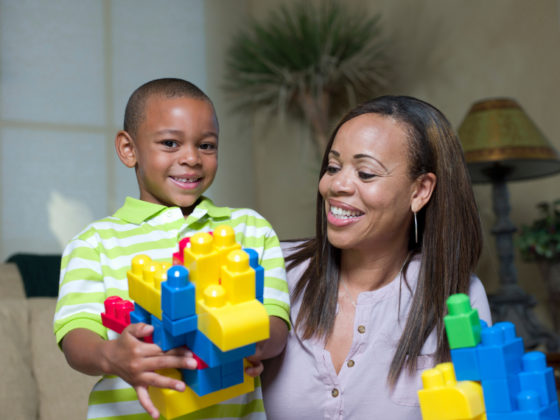The hope is that by encouraging gender-neutral toys, children can pursue their interests without criticism.
We all know the drill. Blue is for boys, pink is for girls. Boys should play with cars, climb trees, and roll in the mud. Girls should play with dolls (but never action figures!), put on tea parties, and pretend to be princesses.
I think I speak for a good number of people when I say: Enough is enough. These stereotypes are prevalent in children’s merchandise across the board. These perceptions skew our children’s notions of what activities are acceptable for their gender to enjoy. Kids should be free to decide for themselves, not have commercials and movies decide for them. These notions formed in childhood, in turn, have great implications about what kind of self-image our children will grow up with.
Surprising as it may sound, the rigid image pushed by today’s marketers wasn’t as prevalent in the 20th century, despite sexism being more acceptable. From the 1920s to 1960s, girls’ toys focused on domestic skills, while boys’ leaned more toward career preparedness. The 1970s saw a shift in tone as more women entered the workforce. Many products, like carpentry sets and child-sized appliances, had their gender roles reversed.
I’m sad to say, this trend was short lived. The 1980s saw the deregulation of TV programs for children, allowing for companies to create longer advertisements. Gender became a key factor in refining target markets. This constant narrowing and refining has made children’s toys what they are today—highly gendered and designed to appeal to stereotypical interests.
Children are incredibly susceptible to advertising, with studies showing that children strongly identify with gender roles in commercials. Basically, if a commercial presents a toy as masculine or feminine, then children will nearly always classify it as such.
This is an important concept because, as SPARK Movement co-founder Deborah Tolman puts it, “Kids get a lot of ideas early from play about what they can do, what they like and what they can aspire to. By making those themes gender specific, it leaves out a whole range of possibilities.” Supporting gender-neutral advertising and branding isn’t about getting rid of rosy pink and sky blue. For us, it’s about removing the stigma our kids associate with playing with toys for the opposite gender.
Getting rid of the stigma will help encourage children to try new things (both now and later in life). A big push behind this movement is neutralizing toys designed to get kids interested in STEM (science, technology, engineering, and math) subjects. Statistically, STEM fields are dominated by men. The hope is that by encouraging gender-neutral toys, children can pursue their interests without criticism.
The benefits later in life depend on the child, but overall, adults are a lot more open-minded about learning typical opposite-gendered tasks if they’ve had good experiences in the past. For example, when I (female, for the record) was young, I did all the standard girly activities. I loved gardening, playing school with my dolls, dressing-up with my playmates.
But my parents encouraged me to include cars and robots in playtime—making “boy toys” accessible, talking about how they function and furthering storylines and plots. They answered my repeated why and how questions patiently, or helped me discover the answers on my own.
While I didn’t end up going into a STEM career, I’ve always recognized how important it is to be able to do simple mechanical tasks, like performing routine maintenance and repairs. My grandfather was also an avid DIY mechanic and never hesitated in showing me the ins and outs of whatever car he was working on at the time. Despite his traditional upbringing, he wasn’t going to let his only grandchild sail through life without some basic knowledge when it came to my transportation. Just this year, I was able to fix my broken air conditioning compressor, a repair that can cost anywhere from $500-700, for significantly less because I was able to do the work myself with a friend. Most girls I know would have just taken it to a repair shop and let the guys do everything. There’s nothing wrong with this in itself and I’m definitely not saying that all women should know how to repair a car. But thanks to how I was raised, I personally like the challenge of keeping my car in good shape and am grateful that my family allowed me that chance.
Fortunately for us, many big box and independent stores are taking steps to desegregate the toy aisles. Target is working on removing gender labels from the toys it carries in-store, but will keep them online as a way to help consumers narrow their results. Toy giant Mattel has gained favor with their DC Super Hero Girls line of figures. This move is especially welcome after the controversy Mattel weathered when excluding Black Widow toys from their Avengers line.
Even online and clothing retailers are joining the movement. Amazon modified listings so children’s toys aren’t categorized by gender on its website. After a small amount of controversy, outdoor apparel maker Land’s End introduced science-themed shirts for girls.
Although I think these moves are good starts, companies still have a long way to go. Because kids are so susceptible to advertising, companies need to realize that the way they brand toys practically force children into stereotypical and antiquated gender roles. As parents, or potential parents, we can try to guide our kids away from such notions, but our efforts can only go so far unless we push companies to reform their branding and advertising.
Holly Whitman is a writer and journalist, originally from the UK but now based in Washington DC. You can find more of her writing on her blog, Only Slightly Biased, or on Twitter at @hollykwhitman.
Other Links:

